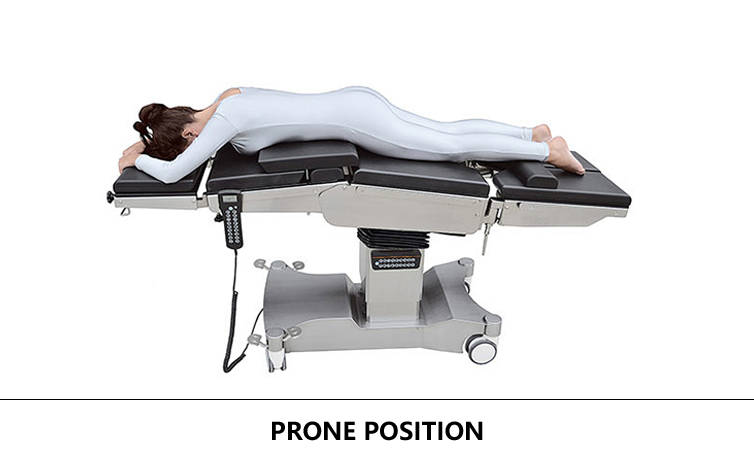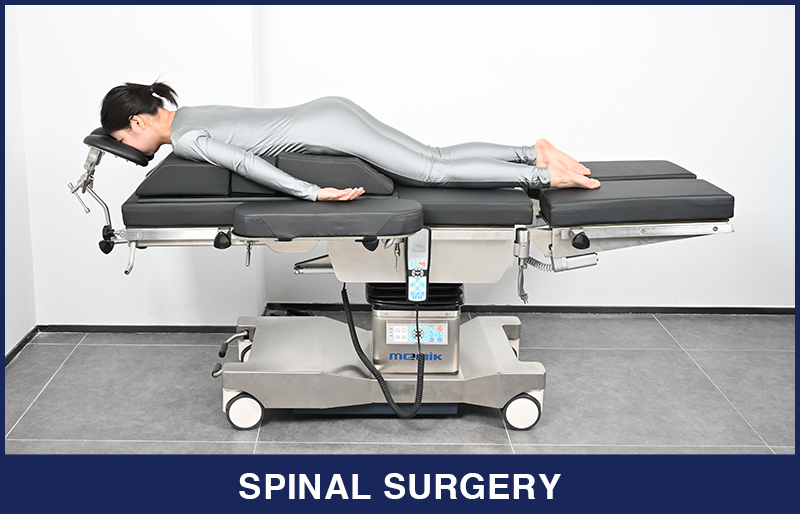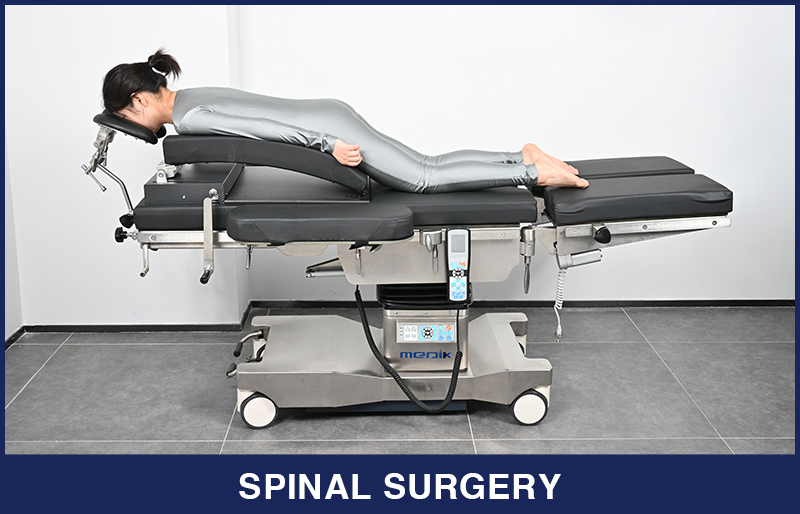

Introduction
The prone position, where a patient lies face down, is a standard positioning technique in various surgical specialties. It provides optimal access to posterior anatomical structures, making it indispensable for certain procedures. However, this position also presents unique physiological challenges and potential complications that require careful management.

Clinical Applications of the Prone Position
The prone position is commonly employed in surgeries that necessitate access to the posterior aspect of the body. Key applications include:
Spinal Surgeries: Procedures such as laminectomies, spinal fusions, and tumor resections.
Neurosurgical Operations: Accessing the posterior cranial fossa or cervical spine.
Colorectal Surgeries: Approaches to the rectum and anus.
Orthopedic Procedures: Interventions on the posterior shoulder or lower extremities.


Benefits of the Prone Position
Utilizing the prone position offers several advantages:
● Enhanced Surgical Access: Provides direct exposure to posterior anatomical structures.
● Improved Ventilation in Specific Cases: In patients with acute respiratory distress syndrome (ARDS), prone positioning can enhance oxygenation.
● Reduced Bleeding: Gravity assists in venous drainage, potentially decreasing intraoperative blood loss.
Potential Complications and Risks
While beneficial, the prone position is associated with specific risks:
1. Pressure-Related Injuries
Prolonged pressure on anterior body parts can lead to:
Pressure Ulcers: Especially on the face, chest, and knees.
Ocular Injuries: Increased intraocular pressure may result in ischemic optic neuropathy, leading to vision loss.
2. Neurological Complications
Improper positioning can cause nerve injuries:
Brachial Plexopathy: Due to arm abduction beyond 90 degrees.
Peripheral Neuropathies: Compression of nerves like the ulnar or lateral femoral cutaneous nerve.
3. Cardiovascular and Respiratory Issues
The prone position can affect hemodynamics:
Reduced Cardiac Output: Due to decreased venous return.
Airway Management Challenges: Limited access complicates intubation and ventilation.
Best Practices for Safe Prone Positioning
To mitigate risks, adhere to the following guidelines:
● Proper Padding: Use cushions to relieve pressure on vulnerable areas.
● Neutral Limb Positioning: Avoid excessive abduction or rotation.
● Regular Monitoring: Check for signs of pressure injuries or nerve compression.
● Secure Airway Access: Ensure endotracheal tubes are well-fixed and accessible.
Conclusion
The prone position is a valuable tool in surgical practice, offering unparalleled access to posterior anatomical regions. However, it necessitates meticulous attention to patient positioning and monitoring to prevent complications. By understanding the associated risks and implementing best practices, healthcare professionals can optimize surgical outcomes and enhance patient safety.
Related Resources
References
1. International Surgery Journal,The Prone Position During Surgery and Its Complications
https://meridian.allenpress.com/international-surgery/article/100/2/292/175367/The-Prone-Position-During-Surgery-and-its
2. Anesthesia Patient Safety Foundation (APSF), The Underappreciated Dangers of the Prone Position
https://www.apsf.org/article/the-underappreciated-dangers-of-the-prone-position/
3.PubMed Central (PMC), Various scholarly articles on prone surgical positioning
https://www.ncbi.nlm.nih.gov/pmc/?term=prone+position+surgery
4. BMC Anesthesiology, Complications and monitoring of patients in prone position under anesthesia
https://bmcanesthesiol.biomedcentral.com/articles/10.1186/s12871-020-00994-w
5. Association of periOperative Registered Nurses (AORN) ,Guidelines for Patient Positioning
https://www.aorn.org/guidelines/clinical-resources/patient-positioning
6. Journal of Neurosurgery: Spine ,Outcomes and safety of prone positioning in spinal surgery
https://thejns.org/spine/view/journals/j-neurosurg-spine/32/5/article-p719.xml